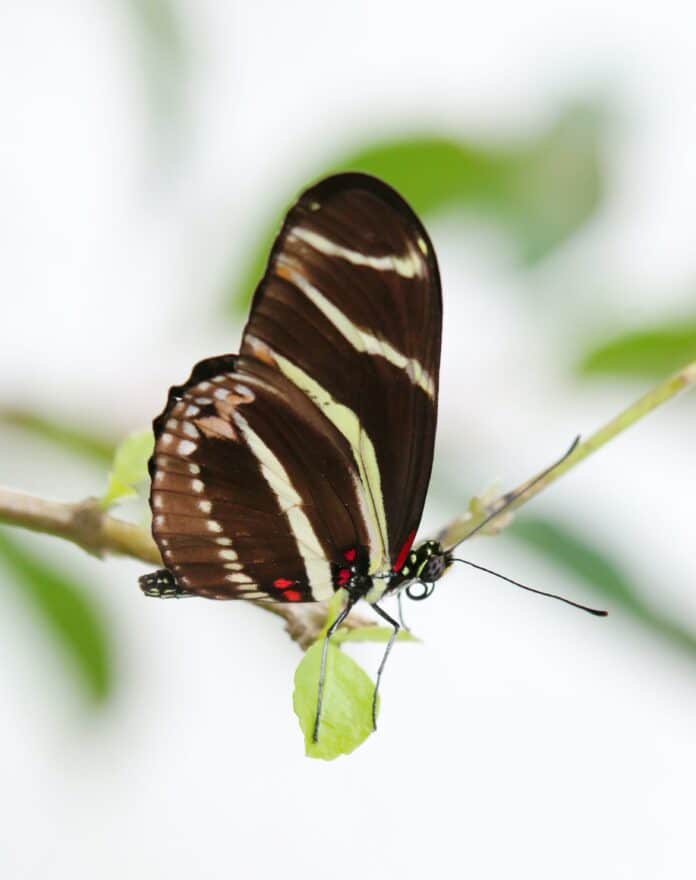A little bit about our state butterfly…
The zebra longwing butterfly, also known as Heliconius charithonia, has distinctively long, narrow wings with black and pale yellow stripes. The species is widespread in Mexico, Central America, the majority of Florida, and some regions of Texas. Though they’re unlikely to survive the winter, the species will occasionally venture north to South Carolina and areas of the central states. This stunning animal was chosen as Florida’s state butterfly in 1996.
Flying slowly and gracefully, they are not easily startled. It is simple to see them because they congregate in roosts to spend the night and visit the same location every day. The female zebra longwing lays her eggs on one of the several Passiflora species, which include the passion flower plant, after mating. Then, the caterpillars feed on these plants and acquire some of their toxins; making them distasteful to predators. The striking colors and patterns of the adult zebra longwings advertise their toxicity.
The adults of longwing, or Heliconian, butterflies enjoy rather long lives compared to other butterflies, which is an intriguing characteristic. Heliconias continue to survive and lay eggs for several months when most other species only last a few weeks. This is made feasible by their habitat, which is tropical or semi-tropical because adult feeding habits are crucial to the length of their lives. The adults of Heliconian butterflies are able to consume pollen in addition to flower nectar, which distinguishes them from most other butterflies.
The Heliconian butterfly can consume both nectar and pollen, unlike most butterflies who can only drink liquids with their specialized mouthpieces. Their saliva allows them to digest pollen and absorb nutrients. Pollen is incredibly nutritious and high in protein, as opposed to nectar, which is low in protein and high in sugar. This diet permits the butterflies to live for longer periods of time and to continue generating eggs for several months. As a result, they are more reliant on flowers than other varieties of butterflies, making them excellent pollinators.
Many heliconians, including the zebra longwing, are thought to be very clever insects. When they roost, there is a social hierarchy; the oldest butterflies select the nicest locations. Early in the morning, they gently prod the others to get moving as well. The ability to recall their food sources and return every day to the plants where they previously fed, a habit known as trap lining, is another intriguing trait of Heliconian butterflies. The memory is so strong that if one shrub along their route is removed, they keep going back to the same spot, searching in vain each time.

